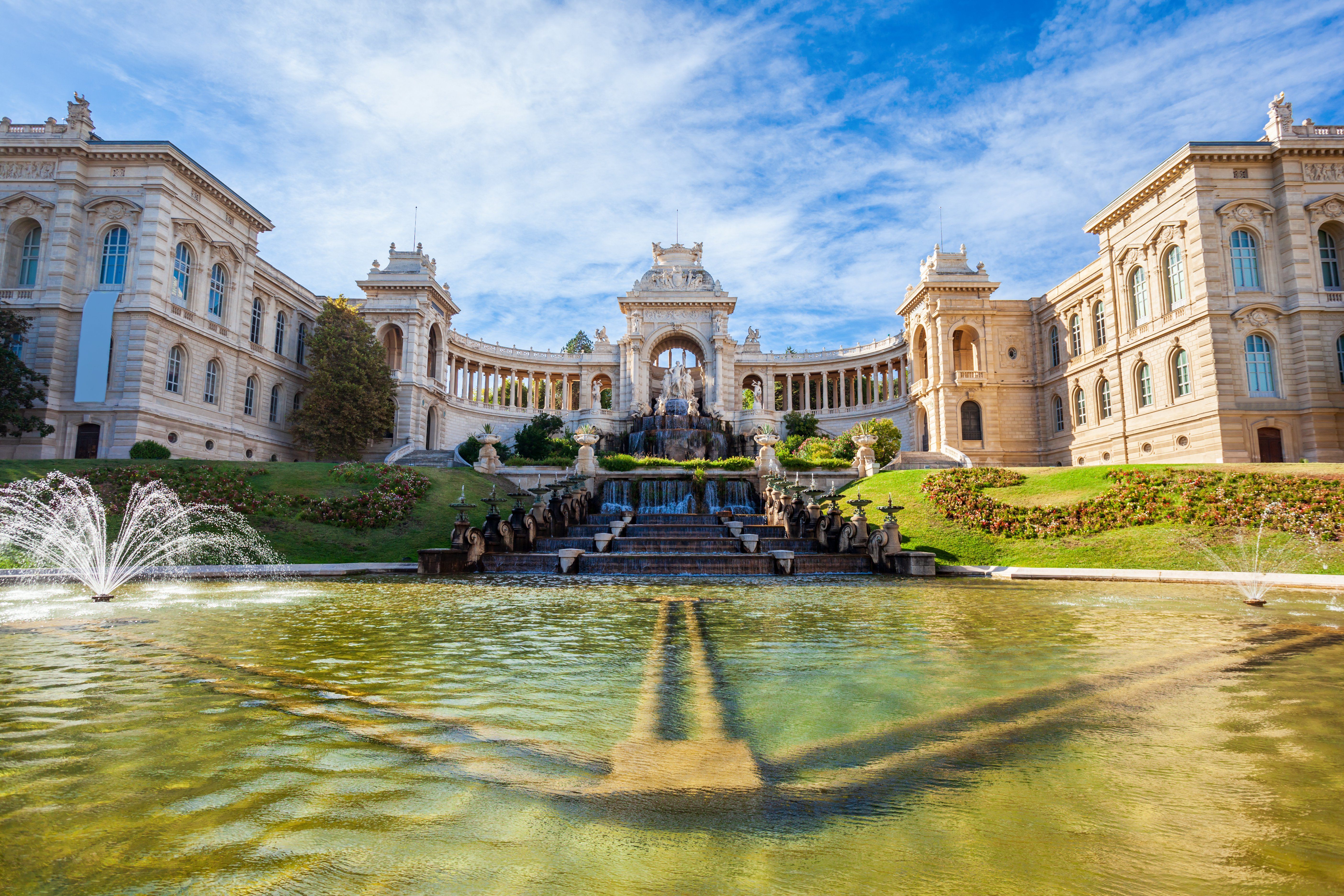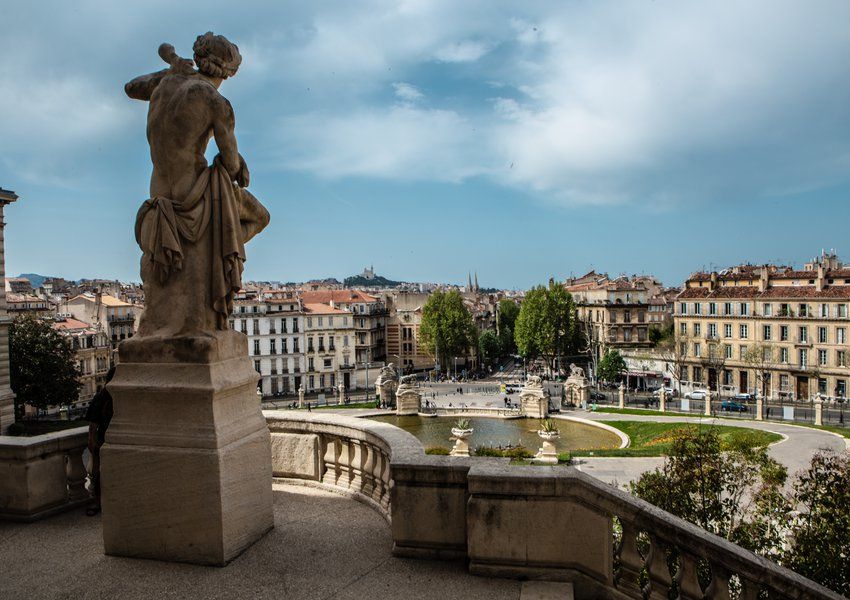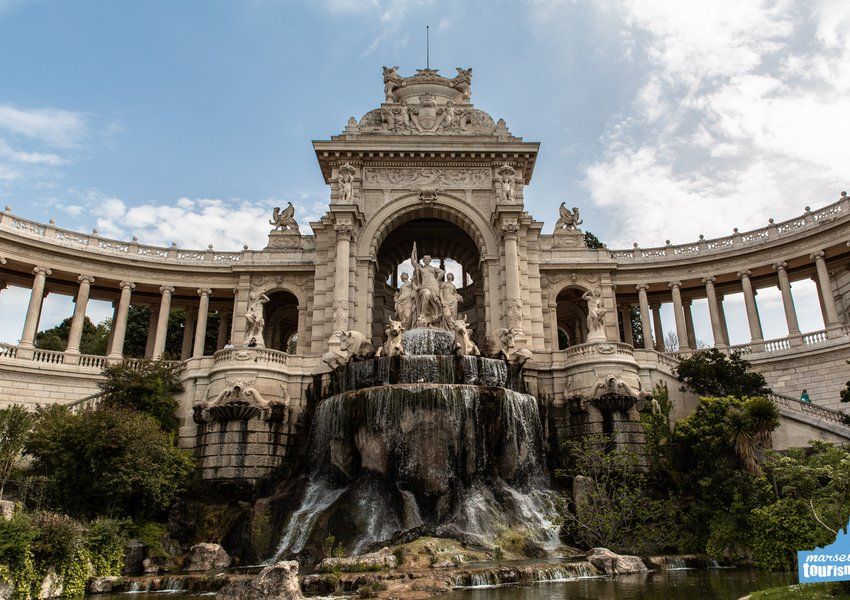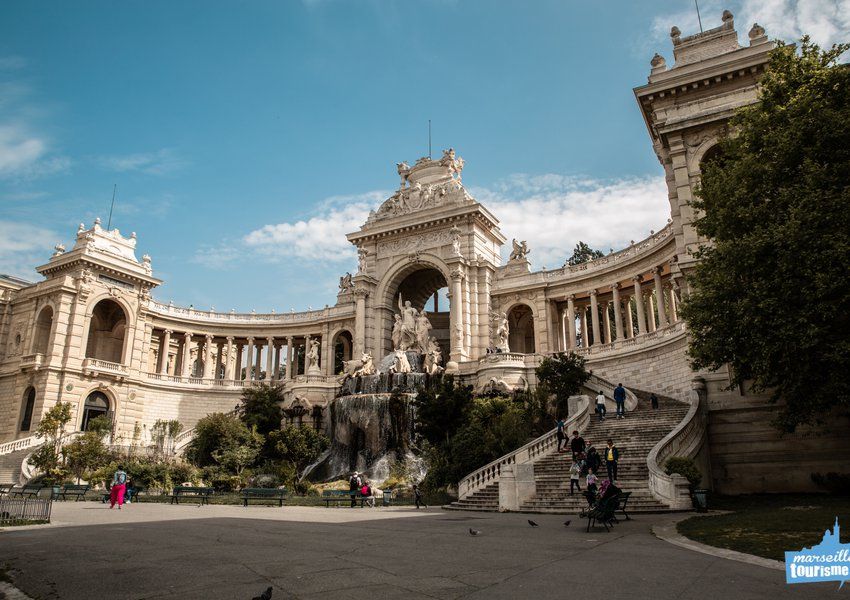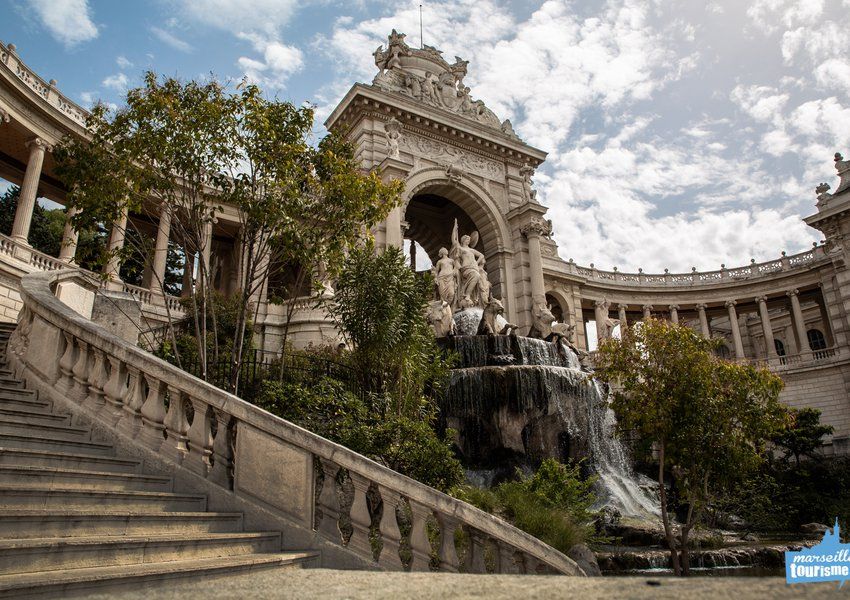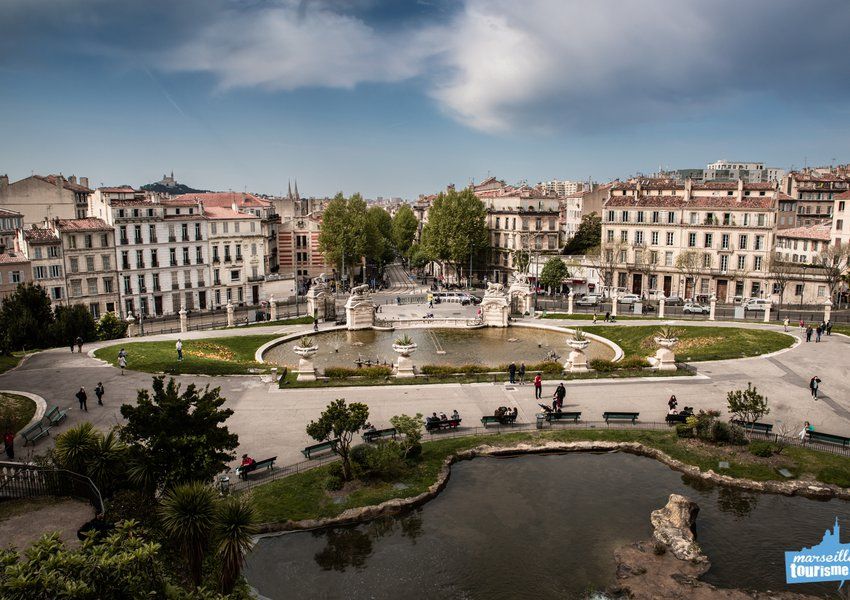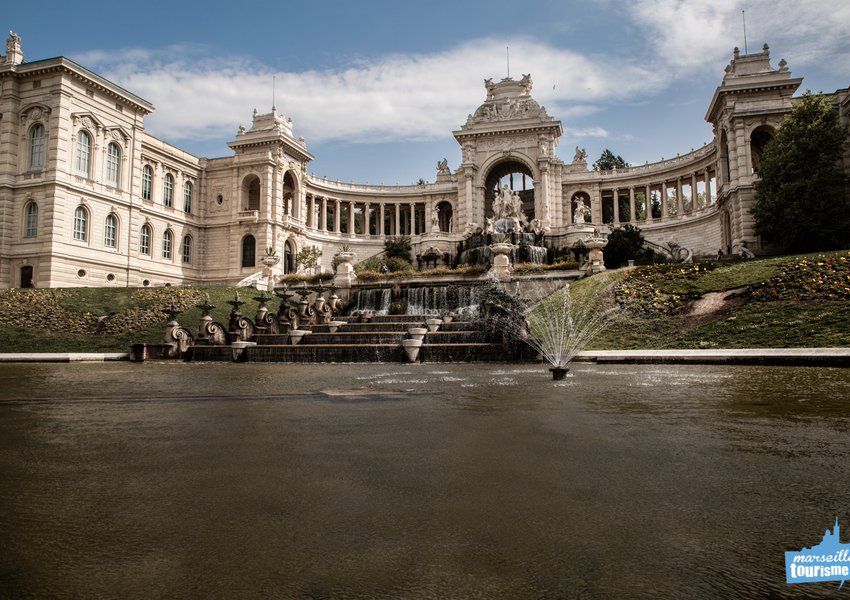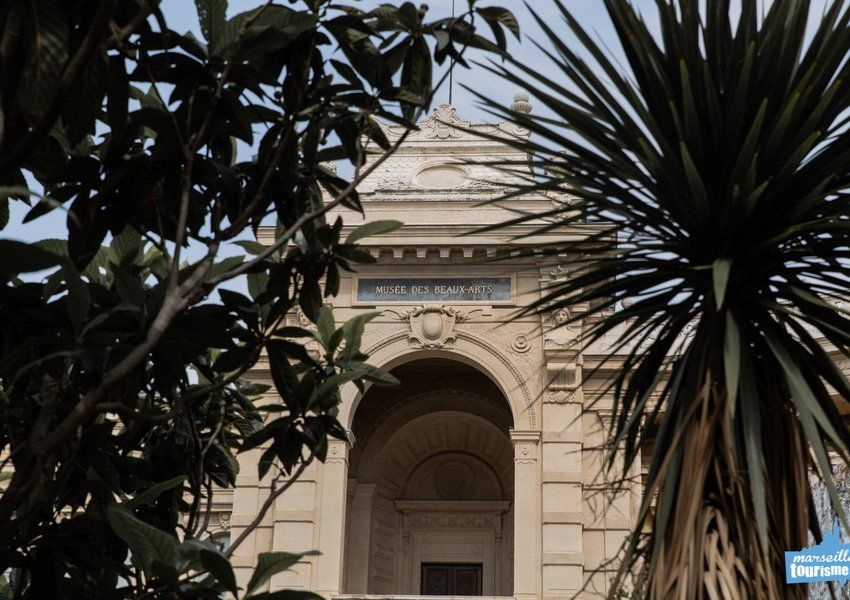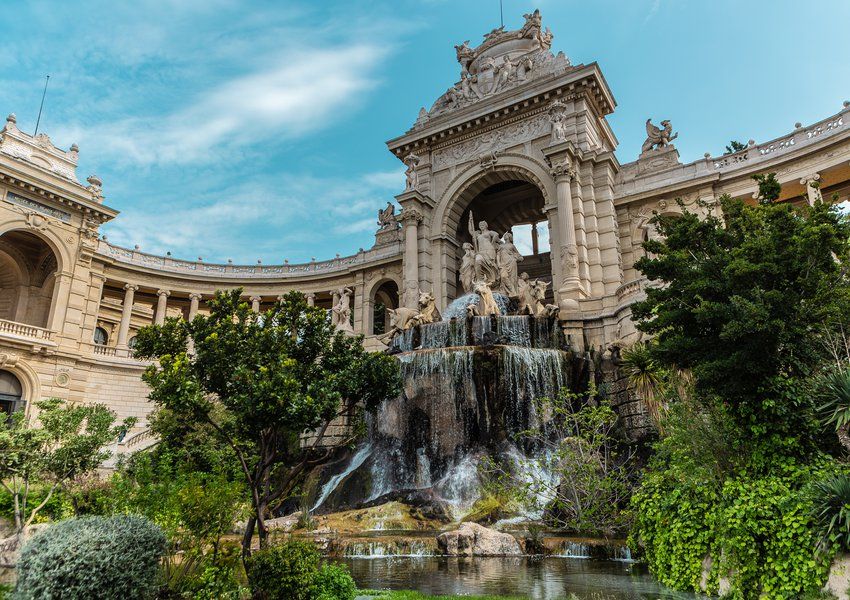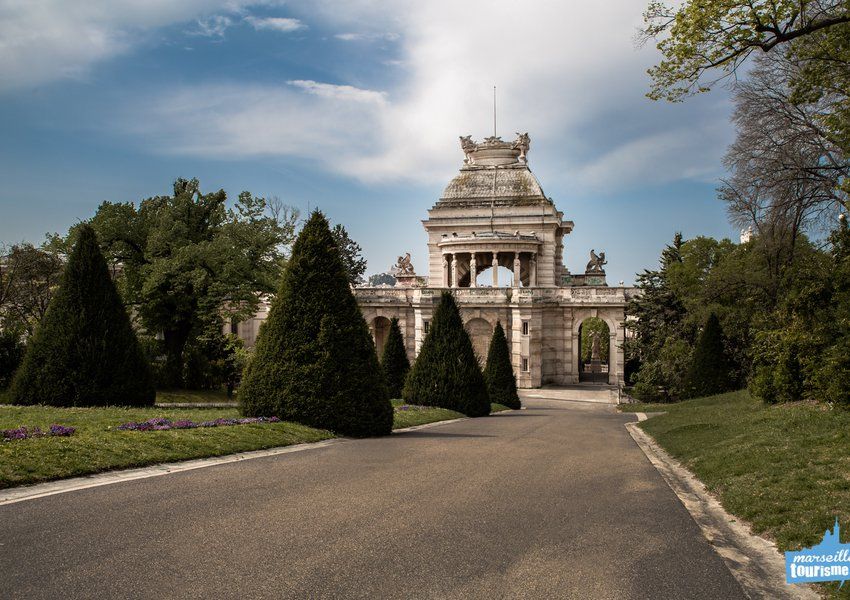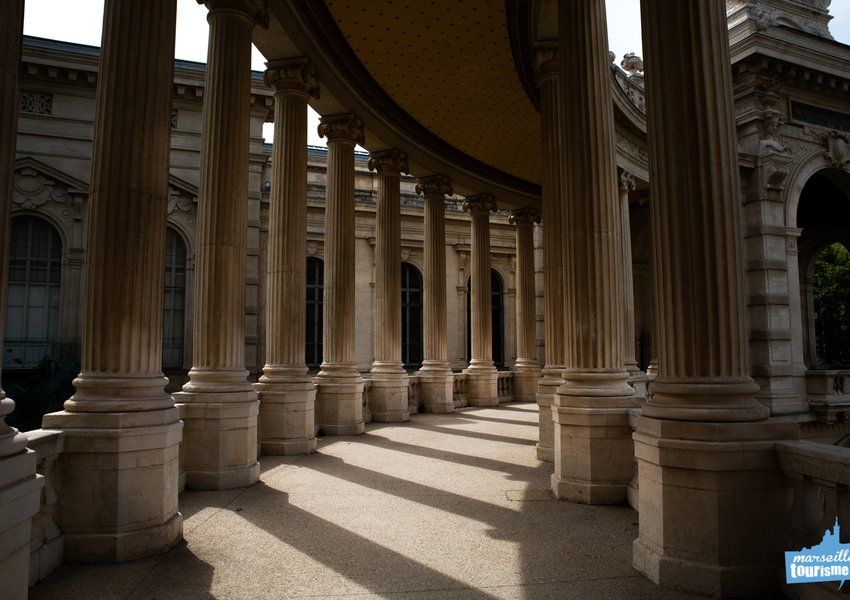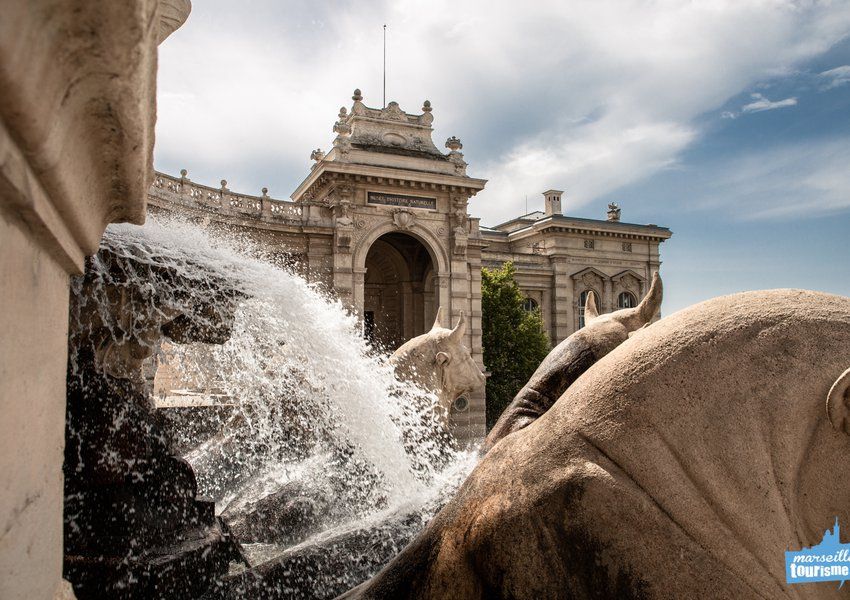One of the most beautiful parks in Marseille
It is one of the few green spaces in the city center, but this majestic park located in Marseille's heart leaves no one indifferent. Eight hectares of green spaces, museums, sumptuous architecture, the Palais Longchamp is full of charm and appeal. It is one of the most beautiful monuments in Marseille.
Depending on whether you approach it from Boulevard Longchamp or from the other side from Boulevard du jardin zoologique, the experience is different. If this is your first visit, the entrance to Boulevard Longchamp is the most remarkable. Indeed, the palace overlooks Boulevard Longchamp with its majestic statues and magnificent fountains.
An architectural jewel
The building, created to commemorate the arrival of water through the Marseille Canal, exalts this element through its architecture and composition. The water problem was for a long time a major issue in Marseille. On July 8, 1947, the waters arrived on the Plateau Longchamp from the Durance. As a result, Marseille was transformed. It was on this occasion that the architect Henry Espérandieu (to whom we owe the Basilica of Notre Dame de la Garde in particular) designed an ambitious project including a monumental fountain surrounded by two imposing aisles. The left aisle houses the Museum of Natural History, which houses many 18th century curiosities, while the right aisle houses the Museum of Fine Arts, which keeps paintings and sculptures from the 16th to 19th centuries. It's the oldest museum in Marseille! It opened in 1801.
Two stairways bypass the fountain to access the museums but also the three gardens on the other side. The " jardin du plateau " was inaugurated in 1896. In its basement two rooms were used as a reservoir for water from the Durance before being redistributed in the city. The " jardin de l'observatoire " was built in 1863/64. The observatory is no longer used for scientific research but is now used as an astronomy museum with instruments dating back to the 19th century, just like the dome of the telescope. An exhibition room also houses the Foucault telescope. Today, the site is managed by an association that organizes events and conferences on these themes.
The Palais Longchamp and its gardens
Finally, the "zoological garden", opened in 1854, reflects the Second Empire's passion for exoticism, a time when the zoo was in its prime. Victim of public disapproval, it closed its doors in 1987, but continues to display its remains. Abandoned cages and other pits remind us that there were animals not far ago. It was also an opportunity to check out the precarious living conditions of the animals, which only had a few square meters available. Walking around remains very pleasant, many elements such as a music kiosk ( from 1888) remind us of the hustle and bustle of the time. Also to be seen is the "giraffe pavilion" which symbolizes Zarafa, a giraffe offered as a gift by Méhémet Ali to Charles X, a zoology enthusiast. The giraffe stayed in the Phocaean city during the winter and then moved to the capital in the spring. The pavilion built in the purest oriental style is a curiosity that deserves a look. If the zoo is a clever mix between a "picturesque" and "English" type garden, the one on the plateau, designed by Espérandieu, is rather typical of the French style.
Today, the locals come here to relax, tourists walk along its paths with their eyes wide open in front of so much majesty reflecting all the splendour of Marseille's history.
Have you thought about renting a bike to walk around the park? Or, for those who want to test their balance, why not consider renting a segway to visit Marseille differently? And for families, Marseille Tourisme recommends the Petit Train de Marseille, ideal to explore our beautiful Phocaean city. The ticket office is located in the Old Port ☺
